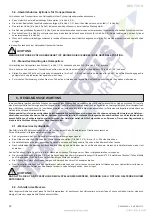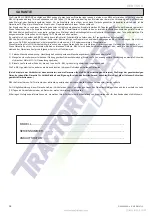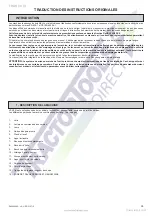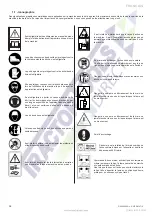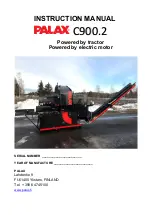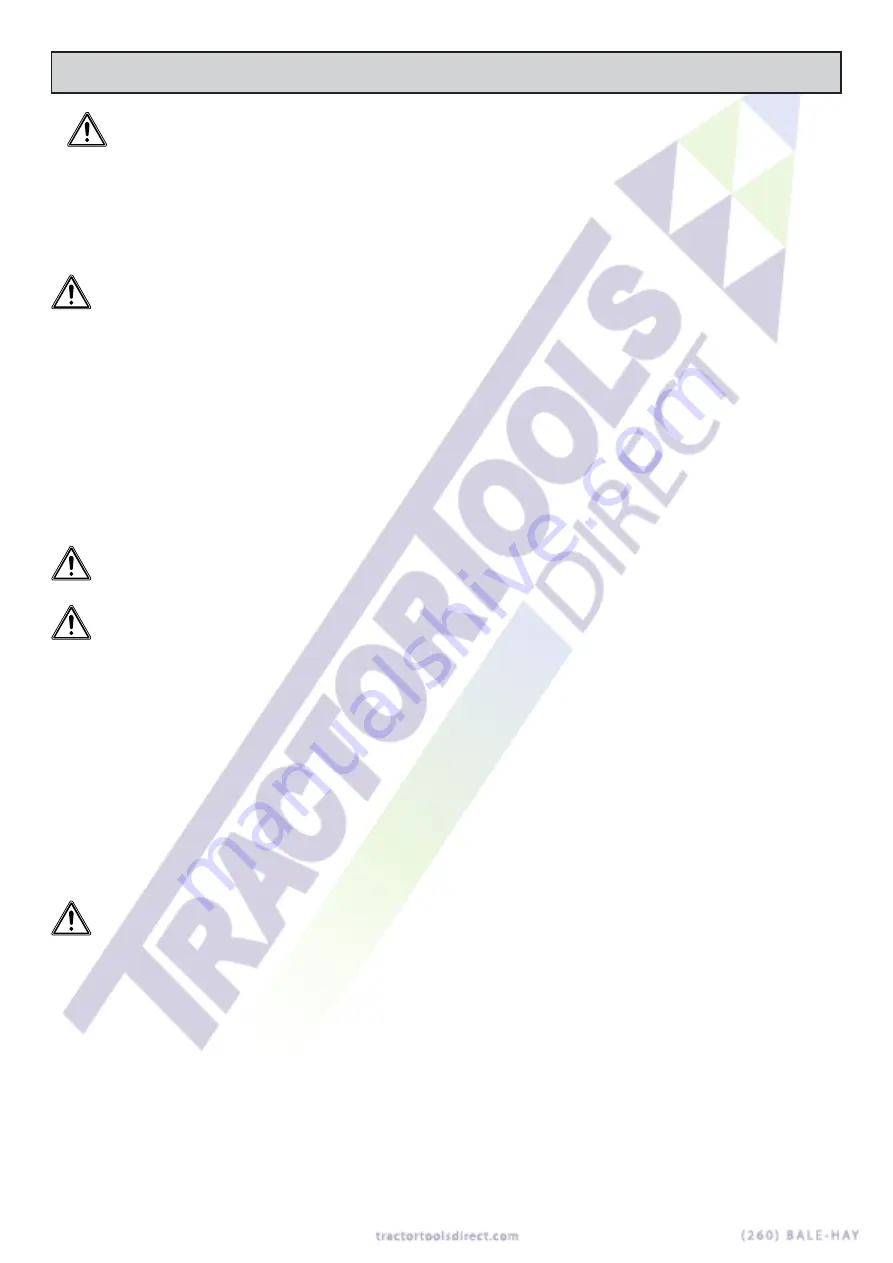
21
D22002600 - v.0 - UPD 210715
ENGLISH
4 - OPERATING THE MACHINE
VS K9 N allows the operator to work in 4 different positions: from completely vertical to completely horizontal (fi g.6,
page 3). In order to modify the position, remove the fi xing pin, position the machine as desired, therefore, re-insert
the pin in the relative hole and secure it with the ‘R’-shaped spring (fi g.6).
●
The log splitter, in compliance with standard EN 609-1, is activated with a two hand control:
the machine will function only when both the levers
are activated together
(
fi
g.4, page 3 and
fi
g.8, page 4).
●
Make sure the tractor is off, that the parking brake is on and if necessary that the wheels are chocked.
●
Connect the log splitter to the three points of the tractor (10 in
fi
g.1, page 2).
●
Connect the cardan shaft to the gearbox (11 in
fi
g.1, page 2) to the power take-off of the tractor. The cardan shaft must be of suitable length and
complete with protective cover. Check that it clicks into place.
WARNING
USE CE-MARKED CARDAN SHAFT ONLY. CAREFULLY FOLLOW THE MANUFACTURER OPERATING INSTRUCTIONS
●
Verify that the control levers (2 in
fi
g.1, page 2) are in neutral position.
●
After connecting the log splitter, start the tractor and check that the cardan shaft turns in the direction indicated on the data plate on the gearbox
(see par. 1.1 “SYMBOLS USED”).
●
Position the accelerator at a suitable rpm for your tractor so that the engine provides suf
fi
cient power for correct functioning of the log splitter and
check that the power take-off does not exceed 440 rpm as shown on the data plate (see par. 1.1 “SYMBOLS USED”)
●
Never use the log splitter if it is not in perfect order or if it needs servicing. Before starting work, check correct functioning of all the safety devices
(two hands control and switch-off button).
●
Open the cylinder following the instructions in section "4.1 - Opening the cylinder".
●
Before starting work, check the integrity of the
fl
exible pipes and the lack of leaks in the connections, check the level of the hydraulic oil in the tank
and top up if necessary with one of the oils indicated on page 19.
The oil level must be between the two notches on the oil dipstick (A in
fi
g.3, page 2)
●
Before starting to split logs, switch on the log splitter and let the oil warm up for a few minutes.
WARNING
FOLLOW THE FEW VERY IMPORTANT RULES INDICATED ABOVE TO AVOID PROBLEMS THAT COULD CAUSE INJURY OR DAMAGE.
WARNING
NEVER TOUCH THE CARDAN SHAFT OR ANY OTHER ROTATING PARTS. THIS IS EXTREMELY DANGEROUS AND MAY
CAUSE INJURY OR DAMAGE.
●
When the machine is not in use or when it’s working, the cardan shaft support (B in
fi
g.11, page 5) must be positioned as shown in
fi
g.11a.
●
In order to hold the cardan shaft while it’s connecting or disconnecting, position it (C in
fi
g.11) on the appropriate support (B), as shown in
fi
g.11b.
4.1 - Opening the cylinder
Before using the log splitter, the cylinder must be lifted as follows:
●
Position a piece of wood under the wedge, on the work surface (A in
fi
g.4, page 3)
●
Activate both the control levers (B in
fi
g.4) downwards:
the cylinder will rise and the wedge will remain resting on the base.
●
Release the right lever (B in
fi
g.5, page 3) and insert the cylinder check pins in the appropriate holes (C in
fi
g.5)
●
Release also the left lever (A in
fi
g.5), therefore activate both the control levers upwards, until they clamp. T
he wedge will now rise in the upper
position, ready to start working
●
At the end of the stroke the stopping device bring automatically the levers in the neutral position
●
Secure the check pins with the “R” shaped split pins.
WARNING
NEVER MOVE THE LOG SPLITTER WHEN THE CYLINDER IS LIFTED. THE MANUFACTURER IS NOT LIABLE FOR INJURY TO
PERSONS, ANIMALS OR OTHER THINGS CAUSED BY TRANSPORTING THE LOG SPLITTER WITH THE CYLINDER LIFTED.
4.2 - Lighting
Lighting must be provided in the entire work area of the log splitter to ensure perfect visibility when operating the machine and during maintenance
and adjustments. Even when working outdoors, there must be suf
fi
cient light to work safely. Working at times when insuf
fi
cient light may result in poor
visibility of the machine and its components (dawn, dusk, night) is forbidden.


























